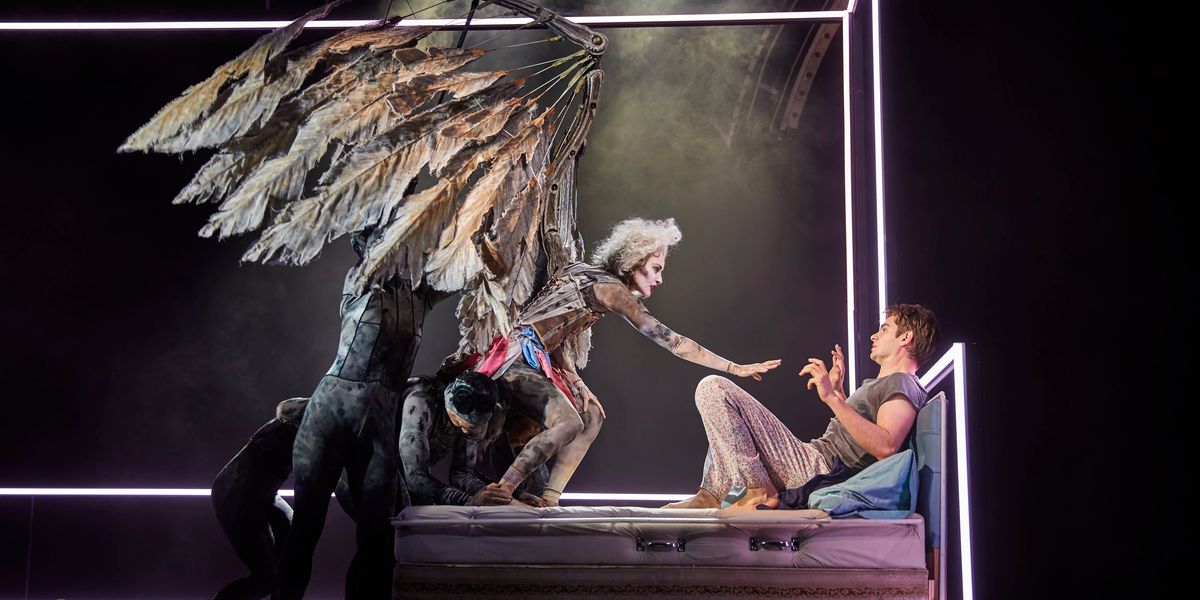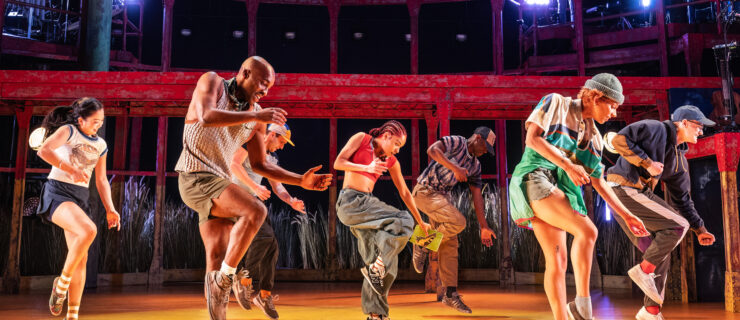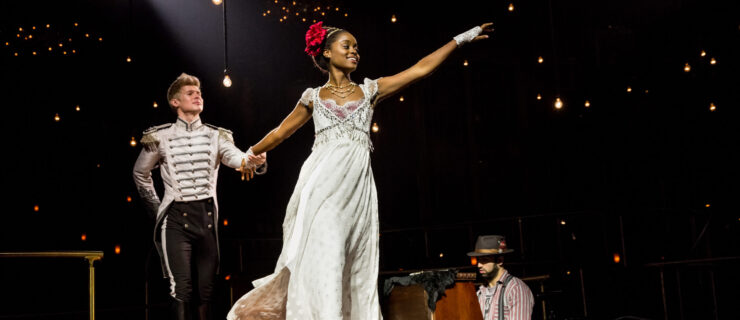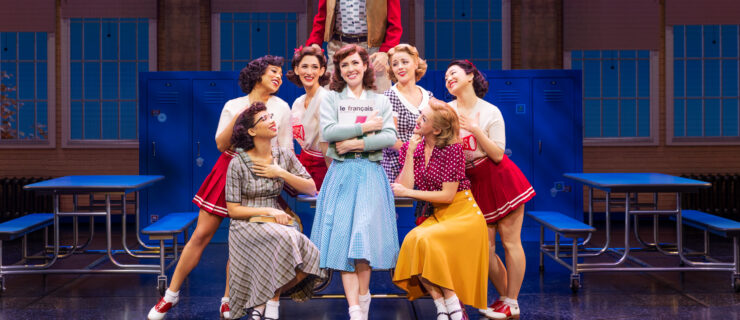How Do You Make an Angel Fly on Broadway? Hire Dancers, Of Course
The first part of Angels in America ends with a bang: Prior Walter, the character we’ve followed for roughly three and a half hours as he weathers the AIDS crisis in 1980s New York City, sees an Angel crash through the ceiling. She beats her wings, hovering over the man cowering in his bed, and intones, “Greetings, prophet. The great work begins!” It’s an immensely satisfying conclusion to Part One, and makes audiences that much more eager to get to the second.
But how do you make an angel fly?
In the Broadway revival of Tony Kushner’s landmark play, specifically the Marianne Elliott–directed production that transferred to the Great White Way after a wildly successful run on the West End, you hire six extra cast members, a combination of dancers and aerialists, and figure it out together.
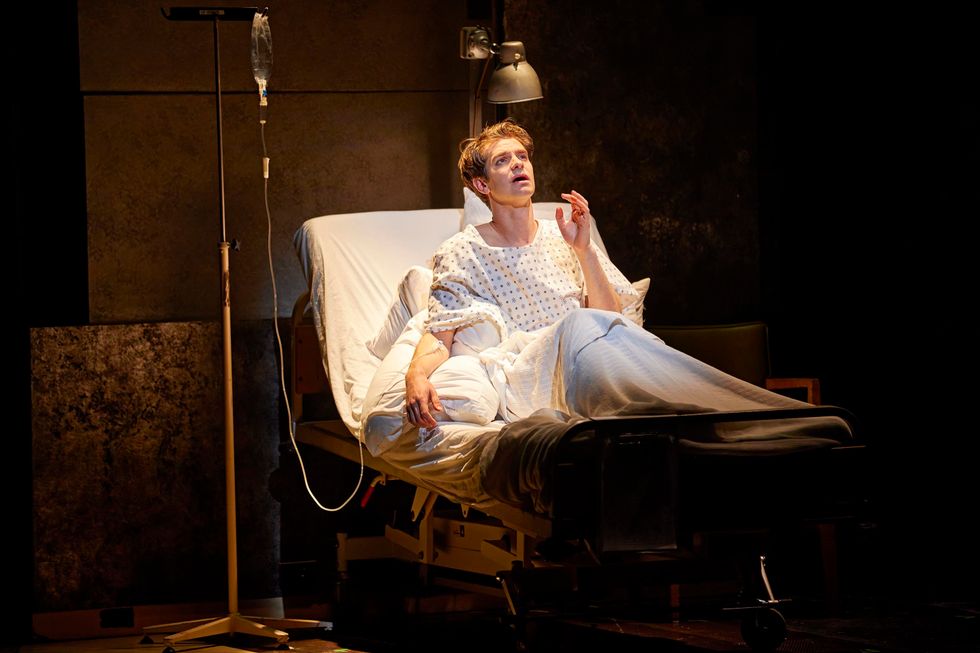
Andrew Garfield as Prior Walter in Angels in America Part One: Millennium Approaches. Photo by Brinkhoff & Mögenburg, Courtesy DKC/O&M
Bring in movement consultant Steven Hoggett (who is receiving a Critics’ Choice Award from the Chita Rivera Awards this season, and got his own Tony nod for his Harry Potter and the Cursed Child choreography), and you have something akin to magic. With his help, those six performers became the Angel Shadows who make the titular Angel fly, fight or twitch a wing in annoyance, as well as move sets and props, during the two-part, eight-hour play.
We talked to Angel Shadow Silvia Vrskova—an alum of Ballet Hispánico, Cirque du Soleil and Broadway’s Fiddler on the Roof—to find out what it’s like being a dancer in the most Tony-nominated play in history:
What Rehearsals Were Like
“The day I found out I got cast, we had to do a workshop to audition the Angel understudy. We couldn’t believe it! We didn’t have a contract and we were already in rehearsal!
“We had two months of rehearsals in Brooklyn. The Brits work very differently—even though we were just “Shadows,” we were all on the same level. If you had something to say, you could, and they did such a good job of casting people who aren’t just good dancers, but creators as well.“
What’s an Angel Shadow, Anyway?
“We’re the essence of the Angel, the extension of their feelings. The expressions of the worlds, how they feel about each other or the situation—we are that.
“We’re very much on the floor, sliding crouching, moving. When we have to lift someone, the preparation has to be seamless—how do we make the Angel go up so you don’t really see us? And how do you get the sense that you’re part of the Angel even though you’re far away?”
Making the Angel Fly
“It was like a puzzle we had to un-puzzle. The flying was too long in London, so we had to figure out how to shorten it. I’m an aerialist, so I loved that they would listen to us, and our ideas to make it faster or safer. You have to have a plan. It’s a lot of brainwork. In those rehearsals we were so exhausted, my brain was going to explode trying to find the solutions! We were just so invested in it.
“We know both Angels, what they each want. At the beginning, we had to be more sturdy for Beth Malone, her feet would really push down and she had a lot more movement. Amanda Lawrence, at the beginning, wasn’t as…not violent, but energetic. Now I don’t need to remember. Intuition tells you what to do with each body.”
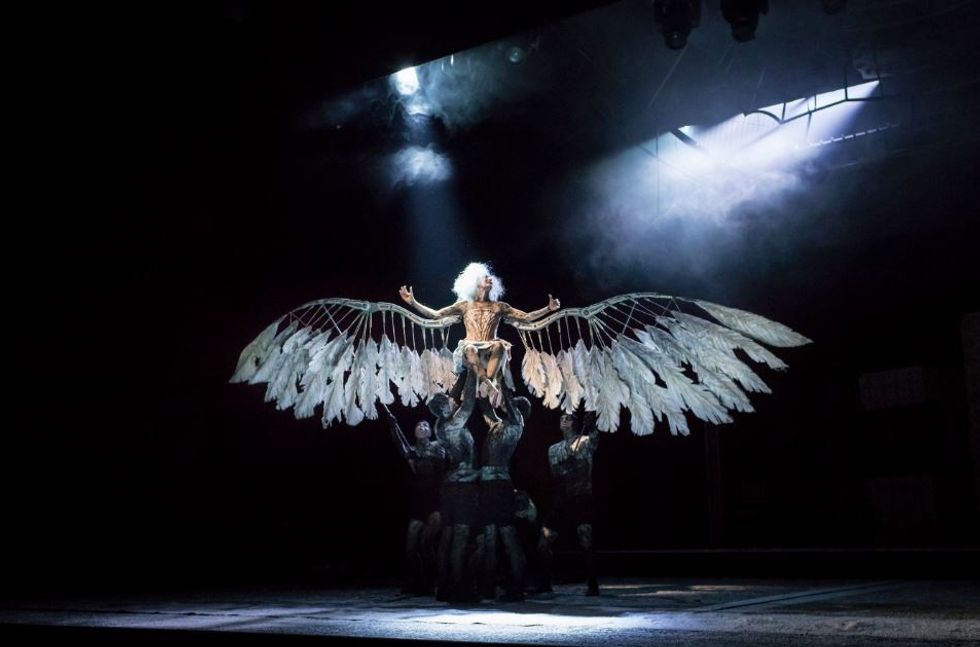
Amanda Lawrence as the Angel. Photo by Brinkhoff & Mögenburg, Courtesy DKC/O&M
Surviving An Eight-Hour Play
“Oh my god! It’s not easy. Those days melt together. I’m like, Didn’t we just do this!? It’s a constant stretching, warming up backstage. We’re always on the floor! Everyone is like, Aren’t they exhausted?”
Handling Props and Sets
“I never knew putting furniture on the right spot could be so stressful! Sometimes you have to save a scene. You have to prepare your body for the impossible, so you can do what you aren’t expecting to have to do—and then make it look like nothing happened so the audience doesn’t see it when something goes wrong.”
Putting Aside Ego
“It’s so humbling to feel that it’s not about me this time. We’re only a small part, but if we can make it better, that’s a big accomplishment. I miss doing what I’m good at, but this is a different challenge, to put the ego aside and be happy for someone else. It’s rewarding.”
What it Means to be Part of Such an Iconic Work
“In the early rehearsals, when the actors would do run-throughs, I would cry every day! I would love to see it from the front again!
“I was 20 years old when I moved to New York City, and I watched the Angels in America movie with my roommate after one of my friends was diagnosed with AIDS. He almost died at 25 because he couldn’t get the pills. I would never have imagined that 20 years later I would be a part of this play.”
